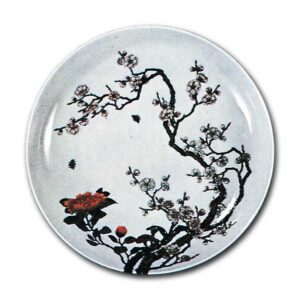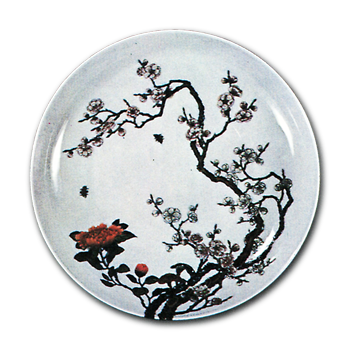
Kogetsuken is the rarest and most expensive type of kiln ware from the Qing Dynasty in China. It is said that imitations made during the same period were also expensive. There are many different theories as to what they are, and it is not clear what they are. (1) Gougetsuken was the name of a house in the imperial palace of the Ch’ien-lung Emperor, and the artist who painted on the porcelain was named Jincheng and his name was written as Xueyue. (2) Kougetsuken was the name of a man named Hu, who was skilled at painting on glassware, and was imitated at the imperial kiln of Ch’ien-lung. (3) Kougetsuken was the name of a house within the Qing court, and did not belong solely to the Qianlong emperor. The vessels of successive generations of refiners were equally stored in this house. It is unclear which of the above three theories is true. Unlike ordinary porcelain, the surface of the porcelain is pure white and almost glass-like. The vessels include vases, plates, and bowls, but most of them are not large and are only a few centimeters in diameter.
The paintings are delicate and exquisite, as if they were Western-style paintings, but they are elegant and very thoughtful without being overbearing. Most of the signatures are four-character signatures dated to the Ch’ien-lung period, but there are also six-character signatures dated to the Yongzheng or Daqing Ch’ien-lung periods. Therefore, it is said that all of the pieces with “Kowetsuken” inscriptions are not authentic. In any case, both the style and outline of these inscriptions are extremely precise, and they appear to have been drawn using a rectangle. (Ya, Ceramics, 6-5)



